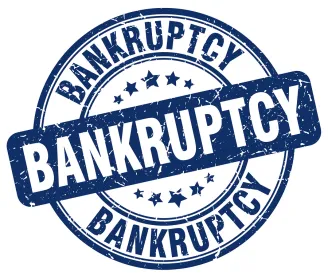Landlords beware: You may not be able to rely on all the remedies found in your lease if your tenant files bankruptcy. For example, the bankruptcy section of your lease may provide that the tenant filing a bankruptcy petition constitutes an event of default. But, in reality, provisions like this are often unenforceable under the Bankruptcy Code.
Section 365 of the Bankruptcy Code sets out the basic rights and responsibilities of landlords and tenants in bankruptcy. Equipped with a working knowledge of these provisions (and a capable bankruptcy attorney), a landlord faced with a tenant bankruptcy can know what to expect in the initial stages of a tenant’s bankruptcy case and develop strategies to reduce the uncertainties involved in the bankruptcy process.
Certain Deadlines for the Debtor-Tenant
A debtor’s rights and responsibilities under Bankruptcy Code Section 365 take effect at specified times in the bankruptcy process, and a landlord’s leverage also changes with time.
Days 1-60
-
The first 60 days of bankruptcy provide a breathing spell for the debtor-tenant. Section 365(d)(3) of the Bankruptcy Code provides that a debtor must “timely perform” all obligations that arise under an unexpired lease of nonresidential real property. In other words, a debtor-tenant must pay rent during bankruptcy.
-
However, the court may extend the time for performance of any obligations that arise within 60 days after the bankruptcy is filed, if the tenant can show cause to do so. So, the debtor-tenant may be able to obtain a 60-day respite from paying its rent obligations.
-
But the bankruptcy court cannot extend the time to pay post petition rent beyond that initial 60-day period.
Days 61-120
-
After the initial 60-day breathing period, the debtor-tenant has another 60 days to decide whether to reject or assume its lease.
-
Notably, if the debtor doesn’t decide within those first 120 days (or plan confirmation, if that occurs first), then (i) the lease will be deemed rejected by operation of Section 365(d)(4)(A) of the Bankruptcy Code and (ii) the debtor must immediately surrender the property to the landlord.
Days 121-210
-
However, the bankruptcy court can extend the aforementioned 120-day period for another 90 days if the debtor files a motion before the 120-day period expires.
-
In other words, a debtor-tenant can get up to 210 days total to decide whether to assume or reject its lease.
-
But remember, during this time, the tenant must pay its current rent obligations as they become due.
Day 211+
-
After the 210 days have passed, the debtor-tenant can obtain still further extensions, but this time it will need the landlord’s prior written consent to do so.
-
At this point, the landlord finally has a say in whether to let a tenant take more time to make up its mind about whether to assume or reject the lease.
Lease Assumption, Assignment and Adequate Assurance
If the debtor-tenant decides to assume the lease, there are several conditions, such as:
-
Section 365(b)(1) of the Bankruptcy Code provides that if there has been a default under the lease, then the debtor-tenant cannot assume the lease unless it (i) cures (or provides adequate assurance that it will promptly cure) the default and (ii) provides adequate assurance of future performance.
-
So, in order to assume a lease, the debtor-tenant must pay all outstanding rent and provide some showing as to how it (or its assignee) will pay rent in the future.
-
-
Many leases contain stock provisions that allow a landlord to terminate a lease upon a tenant’s insolvency or the filing of a bankruptcy petition. Such provisions — called “ipso facto clauses” — are generally unenforceable in bankruptcy due to section 365(e)(1).
-
However, under section 365(c)(3), a debtor-tenant cannot assume or assign a lease if it was terminated before the bankruptcy was filed.
-
For instance, a lease might provide that notice of a default — if left uncured for a certain period of time — results in the automatic termination of the lease. If the landlord in this example provides such notice and the cure period expires before the bankruptcy petition date, then the lease would have terminated by its terms (i.e., it is no longer an unexpired lease). As a result, there would be nothing left to assume or assign. In other words, the Bankruptcy Code cannot breathe new life into the lease in this scenario.
-
Special Considerations for Shopping Centers
Finally, there are some additional requirements for a debtor leasing property in a shopping center. Under section 365(b)(3), adequate assurance of future performance of a lease in a shopping center must include adequate assurance:
-
of the source of rent;
-
that any percentage rent due will not decline substantially;
-
that assumption or assignment of the lease is subject to all provisions thereof (e.g., radius, use, exclusivity restrictions); and
-
assumption or assignment of the lease will not disrupt any tenant mix or balance in the shopping center.
These are just some of the many issues and considerations that may arise in the context of a commercial tenant’s bankruptcy. As noted at the outset, it is important for landlords to work with experienced bankruptcy counsel to provide guidance on these and other issues in the event of a tenant’s bankruptcy.




 />i
/>i
